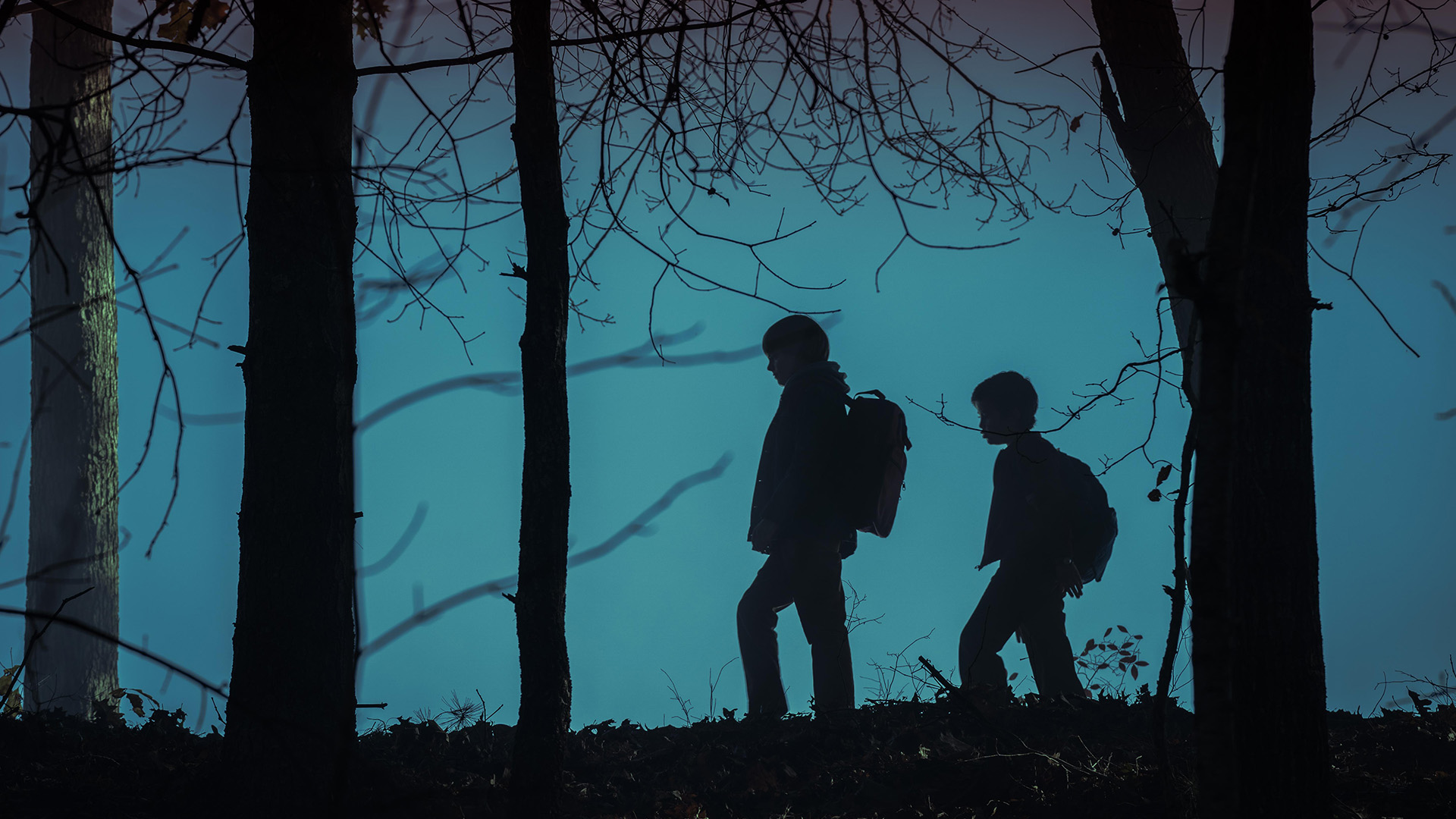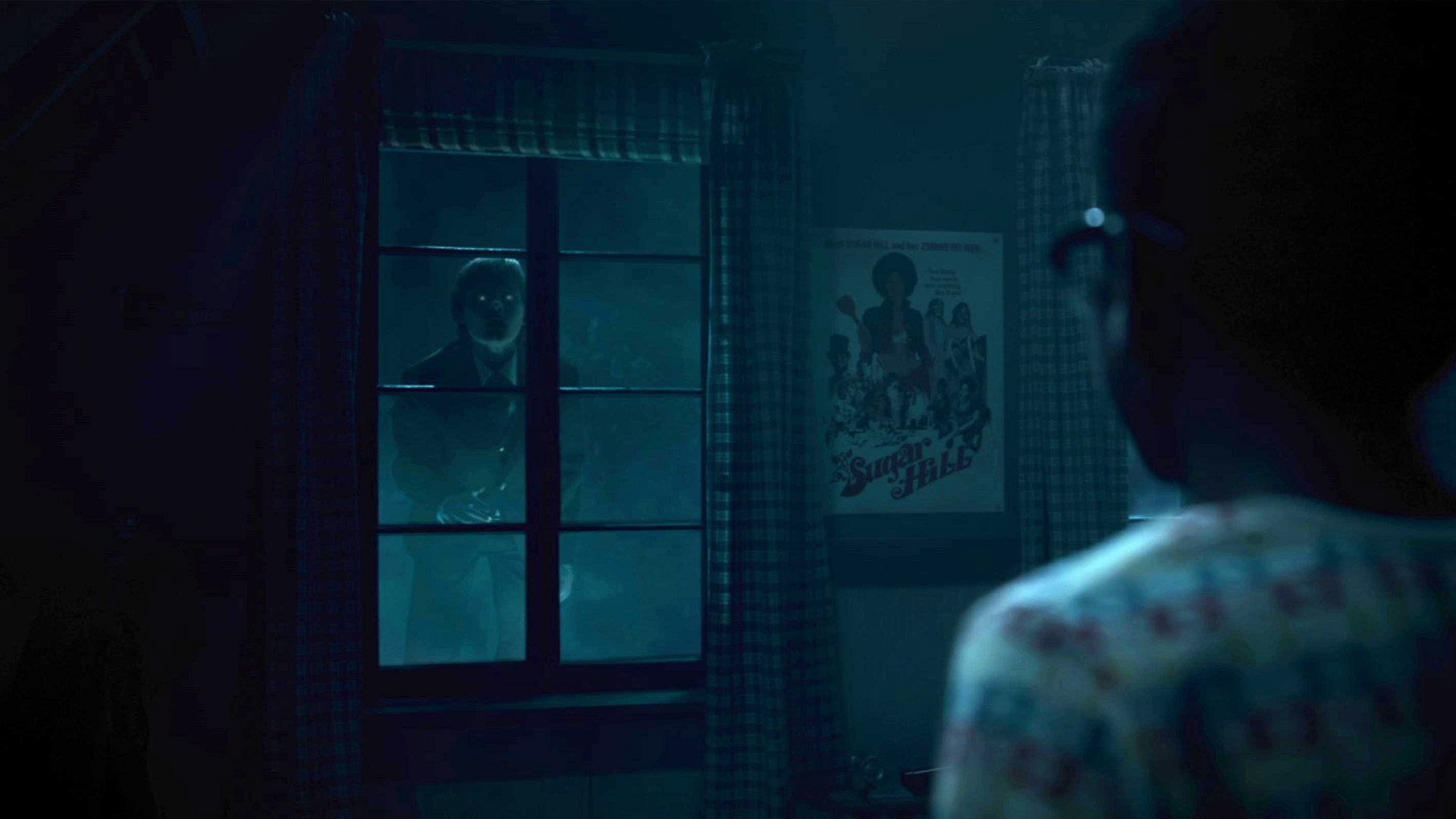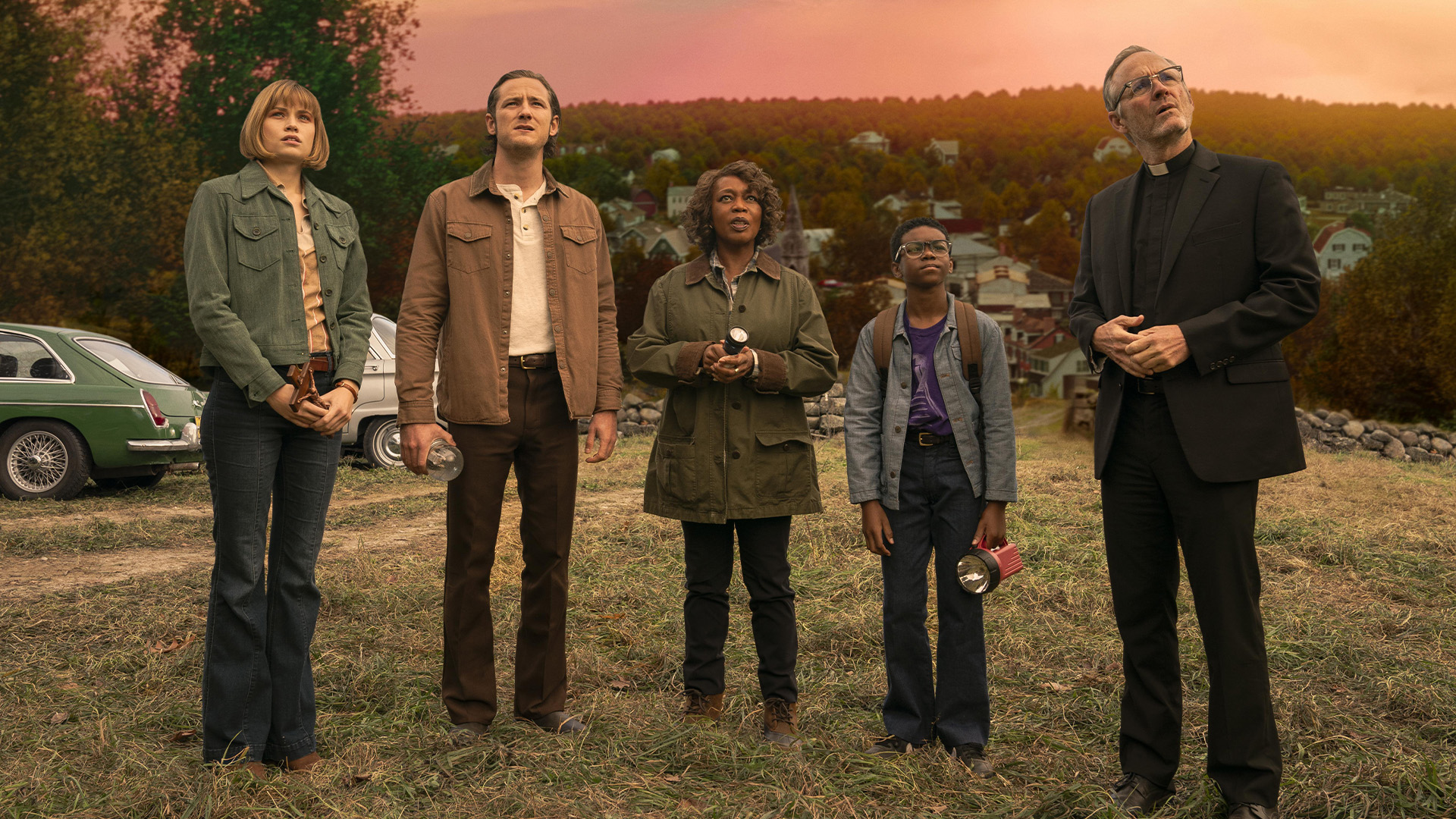Structural problems and overreliance on CGI put a stake in 2024’s Salem’s Lot

Stephen King’s 1975 vampire novel gets a new feature-length adaptation in Salem’s Lot. But, as Stephen A Russell writes, the horror is less impactful than previous versions and the rushed pace muffles emotional beats.
Salem's Lot
“Small towns have long memories and pass their horrors down ceremonially from generation to generation.”
So wrote horrormeister supreme Stephen King in his second skin-shivering novel, ‘Salem’s Lot, with the line predicting the story’s enduring popularity. Published in 1975, it spins the nightmarish tale of author Ben Mears’ very bad trip. Returning to his hometown of Jerusalem’s Lot, Maine, after years away, he’s troubled by a spooky childhood memory, hoping that poking into it inspires a new book.
All roads lead to the Marsten house, the crumbling gothic mansion glowering down on the town from high on a hill. But Mears gets way more than he bargained for when Kurt Barlow—an ancient vampire freshly imported in a box of dirt, Dracula-style by familiar Mr Straker—awakens in the bowels of that eerie manse.
Just as King reanimated the bones of Bram Stoker’s novel with a small-town American twist, the Carrie scribe’s vampiric vision has inspired several visitations. First up was The Texas Chain Saw Massacre director Tobe Hooper’s two-part TV special in 1979, with Starsky and Hutch star David Soul as Ben. A tenuous at best 1987 sequel from Larry Cohen is hardly worth mentioning. Then Rob Lowe stepped into Ben’s shoes in 2004’s second small screen adaptation, helmed by Danish director Mikael Salomon.
After an infamously troubled production intended for the big screen but going straight to streaming, we’re back on the Lot again after an interminable delay, this time in the hands of writer/director Gary Dauberman. Dauberman co-wrote the recent big box office remake of It led by Jessica Chastain and James McAvoy, itself a new spin on the book and the 1990 telemovie.
While not quite as charismatic as Soul, Bad Times at the El Royale actor Lewis Pullman is a likeable Ben Mears, convincing enough to turn the head of aspiring real estate agent Susan Norton (Makenzie Leigh, The Assistant) and cause a bit of a flutter at the local library. His microfiche research there and a natty opening credits sequence, as blood spills across a map tracing Barlow’s voyage from London to the Lot, catch us up to speed on a history of bad luck haunting this town.
As nifty as this backstory drop is, it’s the first hint of a structural problem. At only two hours, this ’70s-set take is a good bit shorter than both the Soul and Lowe-led versions, each of which had to cut a heap of King’s hefty novel. With the author building a strong sense of the town and its residents long before the vamps’ mayhem, this probably should have been a six-part series, even with reshuffling the flow.

Everything whips along at a breakneck pace, muffling the thud of emotional beats landing as the townsfolk get it in the neck. We barely get to know poor Ralph Glick (Cade Woodward, Hawkeye) before the schoolkid’s bundled into a sack and offered to Barlow (stuntman and creature feature regular Alexander Ward) as a sacrifice. In fairness, the hole’s eye view of the approaching beast is one of the film’s few freaky flourishes. His brother Danny (Nicholas Crovetti) is similarly done and dealt with too fast.
Channelling The Lost Boys as much as Stranger Things, Jordan Preston Carter is the most fun as horror comic-informed schoolkid Mark Petrie, but the interplay between him and best mate Danny doesn’t hit as hard, with an iconic window scene from the Hooper version, the terrifier of countless childhoods, less impactful here thanks to an overreliance on computer trickery, a recurring problem stalking contemporary horror movies. There’s too much digital tweaking of Barlow and his fang gang and a distinct lack of practical gore.

But the squandering of Danish actor Pilou Asbæk—Game of Thrones’ loose cannonball pirate captain—is the real headscratcher. The dastardly Straker is a key player in King’s story, a Renfield stand-in who sets up an antique shop as a cover for importing his master. But blink and you’ll miss Asbæk here, which is a real shame, given he’s hamming it up with a whiff of Gary Oldman’s undying one.
You can sense Alfre Woodard trying to inject a bit of heft into a gender-flipped Dr Cody, but it’s not enough to ground a listing ship, even if her “aw hell no” when the bodies start leaving the morgue of their own accord is a fun scary movie tradition. Bill Camp’s school teacher, Mr Burke, spouts way too much clued-up vampire stuff that makes more sense coming from Mark. Much like his alcoholic priest Father Callahan’s fast-fading faith, John Benjamin Hickey feels like he’s going through the motions. Leigh’s no match for Bonnie Bedelia’s tragic turn as Susan in the original adaptation.

Hell, even the Marsten house is a Better Homes and Gardens lifestyle spread compared to the menace-emanating set in the Hooper version. There’s precious little dread here, with the film’s Instagram filter-like colour grading often hampering Michael Burgess’ clearly daylight-shot cinematography and Lisbeth Scott and Nathan Barr’s score veering off the road from Zimmerman-like drones to a lightweight riff on The Omen.
Stories passed down generations either grow stronger or fade away. When Dauberman’s re-do reaches its only real swing, relocating the finale to a setting that bites deep into our love of cinema, the sun’s already going down on this myth.



















